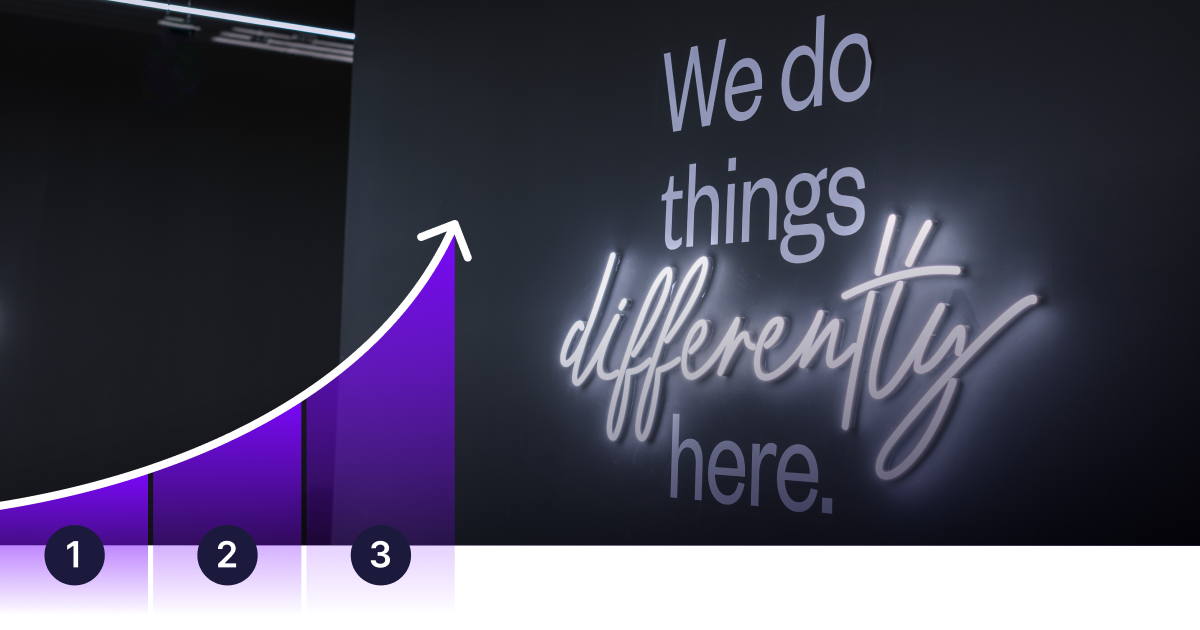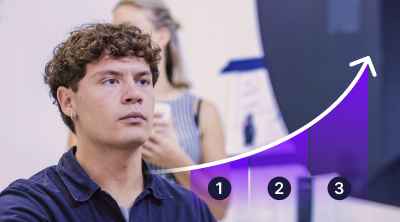Steps to Enhance Your Studio’s Ways of Working

In this series, we’re offering a taste of some of the best practices and strategies featured in our Studio Maturity Reports. If you want to dive deeper into optimizing your studio's performance, we suggest taking our Studio Maturity Self-Assessment. This will provide you with a fully customized report analyzing your studio and outlining exactly what steps to take to advance your studio's operational maturity and unlock its full potential.
When it comes to the topic of maturing the ways of working in content production studios, we know exactly who to call on for insights: Matthias Farenholtz.
Matthias has spent the last 15 years working in the content production industry. In 2019, he joined Creative Force as a founding member, leveraging his knowledge of creative operations to help inform the design of the Creative Force platform. In his current role at Creative Force, he works with studios worldwide to identify ways to optimize their workflows, help them achieve their operational goals, and enhance the value they gain from Creative Force.
As Matthias shares, while each studio’s maturation journey is unique, maturing their Ways of Working often begins by viewing the studio’s workflows from a first-principles perspective.
Achieving Managed & Sustainable Ways of Working
When Matthias begins working with a new studio that he thinks may be more Reactive, his first exercise often involves bringing key operational stakeholders (Studio Management, Team Leads, etc.) into a meeting room to map out their production process end-to-end.
“In studios at the Reactive maturity stage,” explains Matthias, “the surprise from people in the room about how their colleagues work is almost immediate once we start diagramming their work processes on a whiteboard. ‘That’s how we bring in samples?’ ‘That’s the product data we’re using?’ ‘Why is Photography shooting samples in that order?’ ‘Why is the Retouching team being sent 20% more assets than we ever use?’ ‘How long are we spending manually naming files before we push them to the website?’ Just by walking step-by-step through the production process, the teams realize the inefficiencies caused by not documenting and sharing their working methods.”
From there, the process is straightforward: the team must work together to define and document their true processes, both for the overall production process and for their teams, eliminate the steps that don’t make sense in the greater context of the production process, and share those documented processes in a way that makes them visible to everyone.

“SOPs that are locked away in some forgotten folder on an intranet are worthless,” says Matthias. “Everyone in the studio needs to understand that SOPs are the source of truth for the studio's operation. They eliminate subjective finger-pointing when something goes wrong. When there is an issue, everyone refers to the SOPs. Either someone didn’t follow an SOP they should have, or the SOPs need to be changed. It’s that simple.”
Documenting processes also forces studios to address other issues common in Reactive studios, like a lack of clarity around the responsibilities of individual roles.
“Another surprise that often arises when we start documenting processes is when people around the table realize who is doing what in the studio or what everyone expects of someone. You get a lot of ‘I thought you were doing that’ or ‘who said I should do this?’ Sometimes, those are tough conversations, but by the end of the session, everyone clearly defines their roles and responsibilities in the studio.”
Achieving Optimized Ways of Working
Studios that have achieved Managed & Sustainable Ways of Working have all the essential elements. This includes well-documented SOPs, clearly defined roles (even if people still cover multiple roles simultaneously), processes mostly free of manual repetitive tasks caused by unnecessary dependencies from upstream teams, and the ability to implement changes dictated by studio management with relative ease.
For studios with Managed & Sustainable Ways of Working, taking the next step to Optimization requires fostering a studio-wide focus on continuously seeking opportunities to eliminate waste and enhance efficiency within the studio culture.

“What we see in Optimized studios is that, because roles and processes are so well-defined, inefficiencies are easier to spot. There is nowhere for bad practices to hide. Additionally, these studios have cultures that emphasize efficiency gains, so everyone constantly works together to find the best ways to do things. With this type of focus year after year, you can imagine the level of efficiency some of these studios can achieve in addition to optimizing their Studio Technology and Team Lead Collaboration and some of the other components defined in our Maturity Model.”
As a final note, notice the lack of expensive tools or software required in the best practices suggested above. For teams serious about maturing their Ways of Working, there’s nothing we’ve suggested that studios can’t begin implementing immediately. These best practices only require an investment of time, buy-in from teams, and an understanding that well-defined processes and clear communication lay a critical foundation for unlocking the ultimate operational efficiency of the studio.
Want more of our best practices and strategies for taking your Ways of Working to the next level? Take our Studio Maturity Self-Assessment to receive a customized report outlining the exact steps needed to advance your studio's operational maturity and unlock its full potential.







